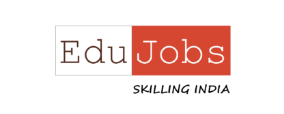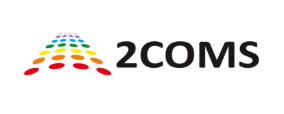7 Ways to embed diversity and inclusion in recruitment policy
Incorporating diversity and inclusion policies are more than just organizational ethics. It is the driving force for organizational growth and performance in the long run.
The scope of diversity in the workplace
Diversity and inclusion is gaining wider acceptance in the corporate world globally. Business organizations are taking various initiatives to incorporate diversity and inclusion in the recruitment policy and at all workplace levels.
More and more organizations are realizing the importance of embedding D&I (Diversity and Inclusion) policies. The importance of diversity, equity and inclusion (DE & I) is stronger than ever before.
“A diverse mix of voices leads to better discussions, decisions, and outcomes for everyone.” — Sundar Pichai.
However, incorporating diversity and inclusion policies are more than just organizational ethics. It is the driving force for organizational growth and performance in the long run.
Why diversity and inclusion matters?
According to BCG study, diverse and inclusive workplace experienced a 19% increase in revenue as compared to less diverse organizations. A recent BCG study also suggests that an increase in leadership diversity leads to improved productivity, financial performance and boosts innovation.
Diversity and inclusion in businesses encourage a healthy balance of people from different cultures, experiences and backgrounds, thus boosting creativity and innovation. A workplace filled with team members from diverse cultures and backgrounds encourages healthy discussion and brings forth unique ideas. This enables the business to gain a competitive advantage and progress in the long run.
A diverse and inclusive workplace allows wider perspectives during brainstorming and problem solving. Most importantly, it eliminates biasses in the recruitment process and encourages people from all backgrounds to accept a job offer. A diverse and inclusive recruitment policy allows the business to hire creative people from different backgrounds, ensuring the best skills.
According to Gartner, inclusive teams improve the overall team performance by 30%.
Furthermore, a diverse team increases performance and productivity. An Inclusive workplace encourages exchange of ideas and allows the co-workers to learn and work together. It positively impacts the culture, performance and productivity of the organization. People from different cultural backgrounds see a problem in different ways, thus boosting creativity and innovation.
Here are 7 ways to embed diversity and inclusion in recruitment policy.
The philosophy of diversity and inclusion at workplace is rooted down to connection and belongingness. These two main themes go hand in hand in a diverse and inclusive workplace in order to make a positive impact.
Inclusive job ads
The job advertisements must be free from any unconscious bias. The flow of communication must be simple with common language free from any business jargon. The job ads must be free from gendered words as much as possible.
Researchers suggest that women are less likely to apply for a job ad that contains masculine gendered words.
Seek diverse cultural candidates
It is a common mistake of finding candidates that fit into the culture of the organization. Instead, recruiters need to find candidates that can add value to the organizational culture. Different candidates have different qualities that might give the organization something different and innovative.
Flexible and remote working
Offering flexible and remote working eliminates geographical boundaries. Candidates can be hired from different geographical areas while supporting flexible work. This also enables the recruiter to select from a large pool of talent.
Widen candidate search
One of the simple ways to widen candidate search is to post job ads on different job portals, including social media platforms. Advertising jobs on different portals and sites widen candidate search and extend the recruiter's reach. This also encourages a thorough and broader talent acquisition process.
AI recruitment tools
There are numerous recruitment AI tools that eliminate the possibility of unconscious bias in the recruitment policies. AI can find candidates with required skills and experience irrespective of the backgrounds. This will ensure impartial shortlisting and screening of candidates.
Handling unconscious bias
Unconscious bias in the recruitment process is often against their best intentions. One simple way to address unconscious bias is to encourage blind applications. Certain background details like nationality, race, caste and religion can be removed.
Structured interview process
An interview process must be structured in such as way that all applications are assessed against the same pointers or markers. It is advisable to stick to a specific set of questions for the same job role for every applicant. This might eliminate subjectivity and biased judgement.
Having interview panel
Having an interview panel is suitable for organizations looking for a human-based recruitment process. Establishing interview panel involves a diverse set of internal employees in terms of gender, socio-economic background, age and religion. This will ensure a more inclusive and informed decision.
Awareness among employees about diversity and inclusion

Business organizations that hire diverse talent are more likely to outperform the less diverse organizations. However, there are key challenges in implementing DE & I at workplace. Biasness is one of the major challenges to diverse and inclusive workplace. Recruiting a diverse range of candidates from different cultures, ages or backgrounds encourages different viewpoints and perspectives. At times this can lead to disagreements and clashes. Henceforth, implementing a diverse and inclusive recruitment policy is not enough. It is equally important to create a fair and inclusive workplace policy where employees accept & respect one another.
Although a heightened focus on DE & I is visible, there is a certain gap in what employers plan to do and what employees experience in real time. The problem lies in failure to implement DE & I mindset at workplace. Greenhouse’s Head of People Cheryl Roubian recommends that it is important to focus on candidate experience, make DE & I a part of everyday and measure employee perception.
Employees must be made aware of diversity & inclusion policies and bake the habits into their work flows. The employees must have a sense of belonging and respect one another in order to be truly inclusive. It is recommended to take annual or monthly surveys to analyse and access the sentiments of the employees and take appropriate measures.
The benefits of a diverse and inclusive workplace is no longer debatable.
However, still many organizations are finding it challenging to create a diverse and inclusive workplace. There are numerous bottlenecks of implementing DE & I policies at workplace.
The first step to create a diverse workplace is to embed diversity and inclusion in recruitment policy.



























